- Home |
- Why With Us |
- About Us |
- Booking |
- Contact Us |
- Site Map


Everest Base Camp with Kala Patthar
18 days (ktm-ktm) Days from
After the dramatic mountain hopping flight from Kathmandu, we make our way to the Sherpa capital of Namche Bazaar, providing your first glance of Everest. The initial awe of this sight may cause you to gaze long enough to witness the peak\'s phenomenal two-inch-per-year growth rate. We continue further up valley, making the winding journey on to Pheriche and Lobuche. This is where we begin the ascent of Kala Pattar, with the reward of stunning views of the South Col route to Everest. From Lobuche, we also pay a visit to Everest Base Camp itself. We’ll be witness to the spectacular Khumbu Icefall, a river of ice making an unhurried path down from Everest\'s flanks. Our descent route takes us by the ideally located Thyangboche Monastery and back to Lukla to board a 35 mins flight to Kathmandu.
| Max. Elevation : 5545m | Grade : |
| Best season : Oct-Dec&Feb-May | Type of trek : Tea house/Lodging |
| Duration : 18 Days | Starting point : Lukla |
| Ending point : Kathmandu | Highlights : Nature |
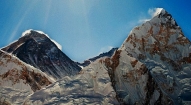
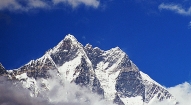
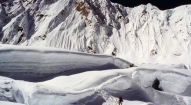
Day 01: Arrive Kathmandu International Airport- T I A (1300m) and transfer to hotel.
Day 02: After breakfast we set out for an extensive guided sightseeing tour of Kathmandu valley’s cultural, historical, religious and (world heritage) sites. During the course, we visit the famous Pashupatinath temple of Lord Shiva situated at the holy bank of River Bagmati where we will also observe the Hindu cremation ritual. We then proceed to the Boudhanath stupa, a major pilgrimage centre for the Buddhist faith which also is the largest of its kind in the world. We then have a short break for lunch followed by a visit to Swoyambhunath stupa also known as the Monkey Temple from where we can have a bird’s eye view of whole of Kathmandu valley. Following this we then proceed for a visit to Kathmandu Durbar Square, the oldest royal palace of Kathmandu and a UNESCO world heritage site. The whole are of Kathmandu Durbar Square is dotted with numerous fascinating Nepalese architect dating back many centuries. The site is also the home to Nepal’s living Goddess – Kumari, where we will also have the opportunity to experience firsthand this unique Nepali tradition. In the evening we will attend the welcome dinner hosted by Makalu Adventure with live Nepalese culture shows.
Day 03: Kathmandu ( 1310m) - Lukla (2827m) - Phakding (2652m) 5 hours
After a very early start, and an early take off from Kathmandu Domestic Airport, a 45 minute flight is all it takes to propel us into the Everest region of Nepal. The landing at Lukla (2800m) is spectacular and on arrival we are greeted by our sirdar and trekking crew who organise the luggage and hustle us off for tea. After a leisurely lunch we start the trek in earnest, setting off for a gentle walk to Phakding (2800m), a further 3 hours to the north. The trail leads through Lukla, past hotels, shops and airline offices to the edge of the Lukla plateauwhere the trail drops to meet the intersection of the Jiri trail at Chablung. From here the trail follows the Dudh Kosi north through the village of Ghat and then finally to Phakding where we spend the night.
Day 04: Phakding - Namche Bazar (3440m) 7 hours
From Phakding it is a steep ascent to Namche Bazaar- a prosperous market town and the administrative center for the Khumbu region. In Namche, one will often see Khampa Tibetans who have crossed over from Chinese occupied Tibet to trade with the Sherpa of the Khumbu. At Jorsale the trail enters Sagarmatha Nat'l Park. Visit the National Park museum situated on a hilltop above Namche. With good weather you will be rewarded with views of Everest, Nuptse and Lhotse.
Day 05: Namche Bazar –Thame (3800m) – Namche - Acclimatization
A 3 to 4 hour acclimatization day hike to the village of Thame, located up the Bhote Kosi (River) valley, west of Namche. The Ngampa La pass at the top of this long valley is an important crossover point for both Tibetan and Sherpa traders. From Thame we are treated to spectacular views of the snow covered giants of the Khumbu as well as many lesser but equally dramatic ice clad peaks. Intricately carved Mani stones line the way to Thame and are renowned for their complexity and beauty. After we pay a visit to the Thame gompa we return to Namche for the night.
Day 06: Namche –Kunde – Khumjung (3790m), acclimatization
We leave Namche for the climb to the Sherpa villages of Kunde and Khumjung (12,400'). Khumjung, which is more traditional in appearance than Namche, is the location of the Hillary School, a primary and secondary school financed by the Himalayan Trust, the philanthropic organization established by Sir Edmund Hillary. There is also a gompa possessing a skull said to be of the yeti. We pause here for an acclimatization day.
Day 07 – 08: Khumjung – Phortse (3800m)- Pheriche (4250m)
Ascend the Dudh Kosi River valley to the beautifully situated village of Phortse, one of the older and more traditional Sherpa villages. Continue the next day up the valley to Pheriche, (14,000') location of a small medical checkpoint.
Day 09: Acclimatization hike
Acclimatization day hikes to Chukung a small summer settlement high in the Khumbu valley. Definitely one of the highlights of the trek, you are presented with spectacular views of the immense ice face of Lhotse, which towers above you while the always spectacular Ama Dablam lies to the south. After lunch it's a quick trip back down to Pheriche where we spend the night.
Day 10: Pheriche - Lobuche (4930 m)
Ascend the wide valley to Phalang Karpo. The trail then climbs steeply onto the terminal moraine of the Khumbu Glacier, and then descends to Duglha (15,158'). Pass a cluster of monuments to climbers and Sherpas who have perished in mountaineering accidents and arrive at the summer village of Lobuche.
Day 11: Lobuche – Kala Patthar (5545m) - Gorekhshep (5164m):
Leave Lobuche at dawn to ascend to the summit of Kala Pattar. Hike up an increasingly rough and steep trail through to Gorak Shep. Pass the small and often frozen lake, and continue upward to Kala Pattar . Catch your breath at the top and survey one of the most magnificent mountain panoramas in the world: the south and west faces of Mount Everest (29,028') and its entourage of neighboring peaks Lhotse and Nuptse. Look down on Everest Base Camp where mountaineers are assembled. Sir Edmund Hillary and Tenzing Norgay first climbed Everest, the world's highest mountain, in 1953. Its Nepali name, Sagarmatha, means 'Churning Stick of the Ocean of Existence.' The Sherpas call it by its Tibetan name, Chomolongma, which means 'Mother Goddess of the Universe.' The name we know comes from Sir George Everest, who was head of the Survey of India from 1823-1843.
Day 12: Gorekhshep –Everest Base Camp (5364m) – Pheriche
Leave Gorekhshep at dawn to make the hike to Everest Base Camp. Depending on the time of year there may be climbing expeditions in camp. Return to Pheriche for the night.
Day 13: Pheriche – Dingboche (4300m):
Return down valley to Dingboche, a summer village in a spectacular setting.
Day 14: Dingboche –Thyangboche – Namche Bazaar:
Walk through a beautiful rhododendron forest to the monastery of Thyangboche . Destroyed by fire in 1989, this gompa has since been reconstructed. From Thyangboche the mountain panorama is one of the most breathtaking in the Khumbu. From this vantage point, the massive Nuptse-Lhotse wall conceals all but the tip of Everest. Rising above the monastery is “Mothers Charm Box”, Ama Dablam. The name stems from a mountain formation said to resemble a dablam, a charm box worn by female residents of the Khumbu and Tibet. Descend back via the Imja and Dudh Kosi River valleys past Mani stones and water driven prayer wheels back to Namche Bazaar.
Day 15: Namche Bazaar - Lukla
Trek down valley following the Dudh Kosi River to Lukla. We have our festive Farewell Dinner with our staff and guides so be prepared for great food and dancing into the wee hours.
Day 16:Lukla – Kathmandu by plane
Day 17: After breakfast we will set out for a sightseeing tour of Bhaktapur and Patan and return to our hotel at late afternoon.
Day 18: Final Departure from Nepal.
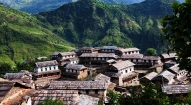
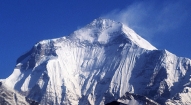
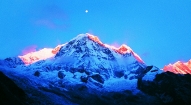
- All ground transfer by private vehicles as per our itinerary
- Fine hotel –Thamel Eco Resort in Kathmandu (twin sharing including b/f and taxes)
- Welcome dinner with live Nepalese cultural program hosted by Makalu Adventure
- Guided sightseeing around Kathmandu world heritage sites including all entrance fees
- All domestic airfares (Kathmandu-Lukla- Kathmandu)
- Full board meals and accommodation during the trek.
- National park, conservation area permits and fees (wherever applicable).
- Guide, porters, their daily wages, insurances with all necessary lodging / fooding arrangements.
- Administration service during rescue and evacuation (if required)
- Down jacket, sleeping bags, Trekking kit bag/duffel bag, trekking map and trekking Poles
- A comprehensive medical kit
- All government and local taxes
- Nepal visa fee.
- Airport taxes.
- International airfare to and from Kathmandu.
- Excess baggage charges.
- Lunch and evening meals in Kathmandu.
- Extra night accommodation.
- Travel and rescue insurance.
- Personal expenses (phone calls, laundry, bar bills, battery recharge, extra porters, bottle or boiled water, showers etc).
- Rescue and evacuation, if required.
- Tips and gratitude





